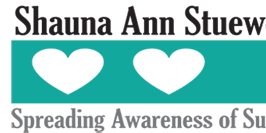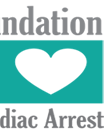 |
 |
 |
 |
 |
 |
 |
 |
 |
 |
What is sudden cardiac arrest?
Sudden cardiac arrest (SCA) is not a heart attack. It is a condition in which the heartbeat stops abruptly and unexpectedly. This usually is caused by ventricular fibrillation (VF), an abnormality in the heart's electrical system. When this happens, blood stops flowing to the brain the heart and the rest of the body, and the person collapses. In fact, the victim is clinically dead and will remain so unless someone helps immediately. A quick combination of CPR and defibrillation can restore life.
What are some of the symptoms of a possible cardiac problem?
If any of the following signs are present in a child, or if a family history of these signs exists, the child should be evaluated further by his or her primary care physician:
- Abnormal heart murmur
- Fainting or dizziness especially during or immediately after exercise
- Skipping or racing heartbeats
- Excessive fatigue associated with exercise
- Excessive shortness of breath with exercise
- Unusual chest pain or discomfort with exercise
- Skipping or racing heart beats
- High blood pressure
- Premature death from cardiovascular death in a close relative younger than 50
- Close relatives with heart conditions
What are some of the risk factors that may be an indicator?
- Viral Infection
- Family history of heart disease
- Family members with unexplained fainting
- Premature birth
- Diabetes
- Obesity
- Premature death(under age 50)of a family member
What are some non-invasive tests that can be done to prevent cardiac arrest?
- 24 hour Ambulatory Monitoring
- Electrocardiography(ECG or EKG) Monitoring
- Echocardiography (ECHO
- Chest X-ray
- Magnetic resonance imaging (MRI)
- Chest computed tomography (CT) scan
- Exercise stress testing Electrophysiologic
What is the best way to treat a cardiac arrest?CHAIN OF SURVIVAL
- Early 911 access
- Early CPR
- Early Defibrillation
- Early Advance Life Care
What are the Statistics of Early Defibrillation?
For every minute that passes without defibrillation, a victim's chance of survival decreases 10 percent.
- PAD programs can raise survival rates for out-of-hospital cardiac arrest from below 5 percent to as high as 50 percent. Estimates that widespread availability and use of automated external defibrillators (AEDs) could save as many as 50,000 Americans each year.
- On average, it takes EMS teams in the U.S. an average of 6 to 12 minutes to arrive.
- 90-95 percent of all SCA victims die. Documented AED programs have shown that survival rates can rise to 70 percent or more when an AED program is in place.
- Almost every state includes the "good faith" use of an AED by any person under the Good Samaritan Laws.
- Sixth-grade school children with moderate training can learn to use (AEDs) to save the lives of cardiac arrest victims almost as quickly and efficiently as professional emergency medical personnel.